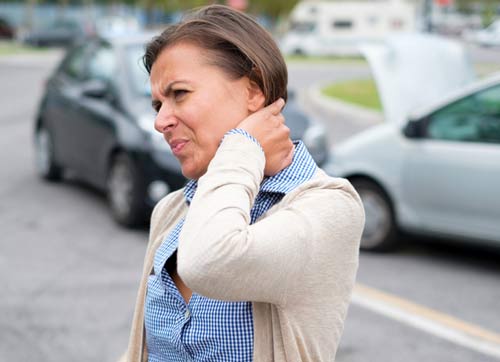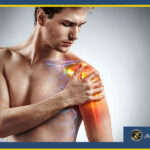Most of us are relieved to survive a car accident. Since nearly all of us know (or knew) someone who did not live to tell about it, the first thought that comes to mind is, I’m one of the lucky ones.
 However, post-traumatic pain is not always quick to announce itself.
However, post-traumatic pain is not always quick to announce itself.
Long after the insurance claims are filed and the patient is back at work, the survivor may realize that their knee— or neck, or back, or head— has never been the same.
We may be living with pain that just won’t go away.
Acute pain is the sudden and sharp jolt you felt on impact. Chronic pain is more insidious. It can show up weeks or months after the accident, and it may persist long after you think you’re healed.
When a patient appears at our clinic, he or she may not even recall when the pain started.
It’s only when we ask if there was an accident in their recent history that the light goes on.
Chronic pain is difficult and acute pain is nothing to scoff at. The torque on the body during a car accident may cause neck strain, concussion, or fractured vertebrae. Facial injuries are common, as the driver comes in contact with a steering wheel, airbag, windshield, or dashboard. Displaced teeth or jaws are fairly common. But after we’ve treated the trauma with medication or surgery, you may still be plagued with pain. In fact, a study from the University of North Carolina found that six weeks after a motor vehicle accident, 70% of people still had pain, most frequently in the neck, back or muscles. This is where it becomes a diagnostic and treatment challenge.
Long After Insurance Claims are Paid, The Body Still Hurts
Injuries from a car accident may involve more than one body part, which adds to the confusion. While you are being treated for cervical strain, it’s possible to ignore the nagging pain in your hip. That’s why regular visits to the orthopedic clinic are a smart move. The doctor can monitor your progress and also investigate other unexplained aches and pains.
Once the problem has been diagnosed, we have a variety of therapies to relieve chronic pain and improve function:

- medications such as NSAIDs
- TENS (transcutaneous electrical nerve stimulation)
- surgery— to relieve pressure on a nerve, for instance
- nerve blocks, which can interrupt the transmission of pain signals
- biofeedback or behavior modification
- acupuncture
- exercise tailored to the chronic pain patient
Pain Management Calls for Patient Involvement
The latest research on pain management shows that a patient who feels in control is most successful. We can help the patient understand how to minimize the pain. There are many treatment options, and their efficacy may depend on how fully the patient embraces them. For some patients, alternative approaches such as acupuncture or meditation deliver the best results. For other patients, more traditional western tactics such as physical therapy are more effective.
Or it may be a combination of therapies that is most effective. Joan may find that physical therapy and meditation reduce the pain to a level she can live with. Art, on the other hand, swears by exercise and biofeedback. Jason visits his acupuncturist but also takes a nightly pain-killer. There is no one cure for the complexity of chronic pain.
Pain affects everything: work, relationships, mood, activities . . . . When chronic pain settles into a person’s life, quality often takes a back seat. One of our goals at All-Pro Orthopedic and Sports Medicine is to see that you are physically as comfortable as possible and mentally equipped to deal with the challenges.
If you’ve been through a car accident and find that you still have persistent pain, do yourself a favor and call the clinic. Pain is complicated. We can help.











